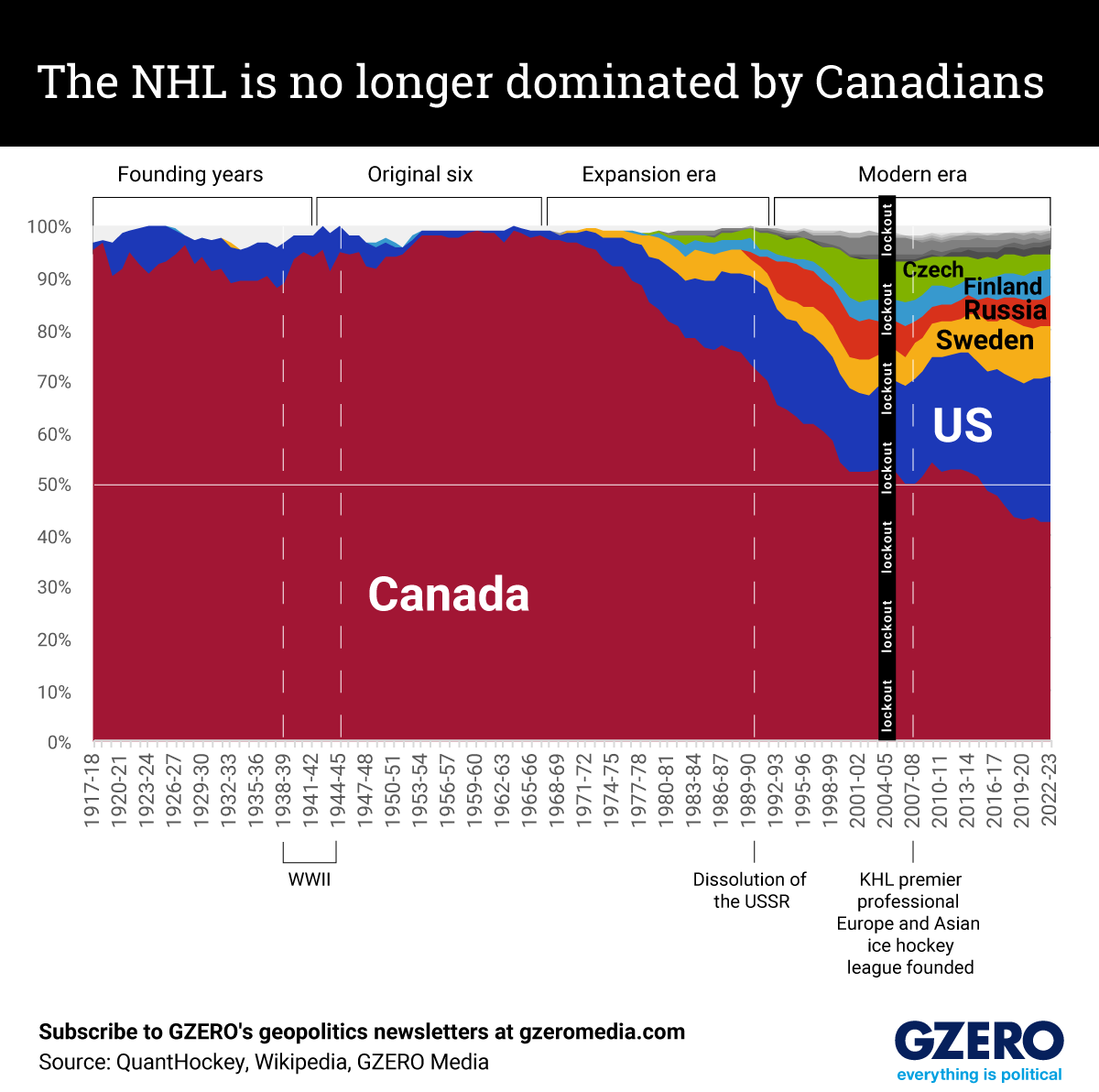October 12, 2023
Tuesday was the happiest day of the year for many Canadians: NHL opening night! Canadian fans may notice, however, that there are fewer and fewer Canadian players – part of an ongoing trend. In fact, the last time more than half the league hailed from Canada was 10 years ago, as ever-greater contingents from the US and Europe filled NHL rosters.
It’s a far cry from the early days of the league when the NHL was an all-Canadian affair. Nearly a century ago, in 1924, the Boston Bruins joined the NHL as the first American team. Even then, the number of Americans was tiny – less than 5% for most of the 1940s and 50s – and Europeans hardly even registered.
That all started to change in 1967 when the NHL added six new American teams. It opened slots for more American players, and a trickle of talent from Sweden, Finland, and later Czechoslovakia found its way to the New World as well.
But the biggest changes came after the collapse of the Soviet Union. Long Canada’s fiercest rival at Olympic-level hockey, the fall of the Iron Curtain coincided with a major influx of Russian and other former Soviet players.
But as our graphic above shows, these days the share of European players is falling, and Americans are the fastest-growing demographic in the league.
More For You
- YouTube
On Ask Ian, Ian Bremmer breaks down the steady escalation of US pressure on Venezuela and why direct military action is now a real possibility.
Most Popular
Global conflict was at a record high in 2025, will 2026 be more peaceful? Ian Bremmer talks with CNN’s Clarissa Ward and Comfort Ero of the International Crisis Group on the GZERO World Podcast.
- YouTube
On Ian Explains, Ian Bremmer takes a look at the growing surge in global conflict and the ripple effects of so much violence, war, and armed struggle throughout the world.
Immigration and Customs Enforcement (ICE) agents check the identity documents of a group of agricultural workers at a grocery store parking lot during an immigration raid in Mecca, California, U.S. December 19, 2025.
REUTERS/Daniel Cole
A year into US President Donald Trump’s second term, America’s immigration policy has undergone one of its most sweeping resets in decades.
© 2025 GZERO Media. All Rights Reserved | A Eurasia Group media company.
